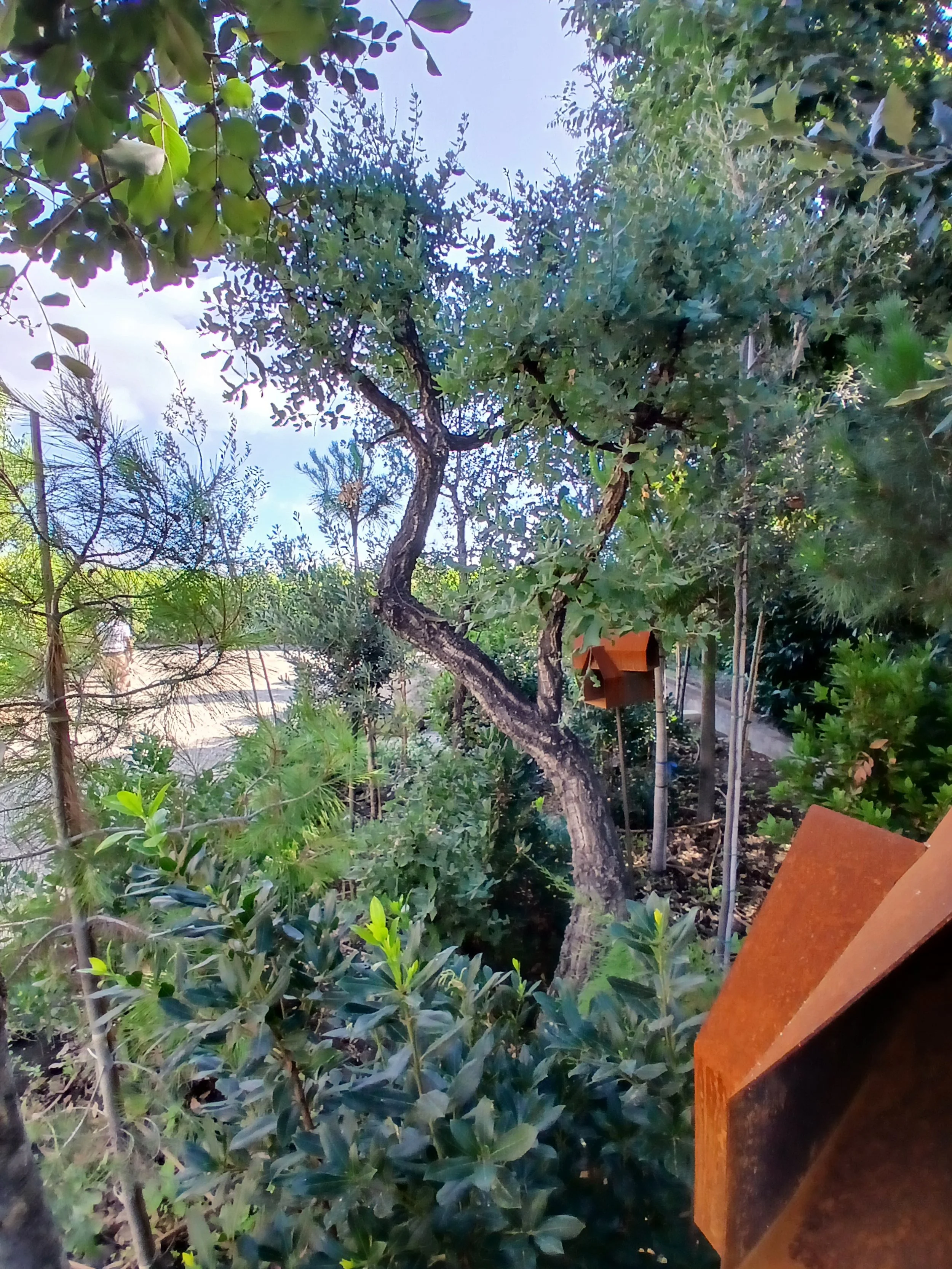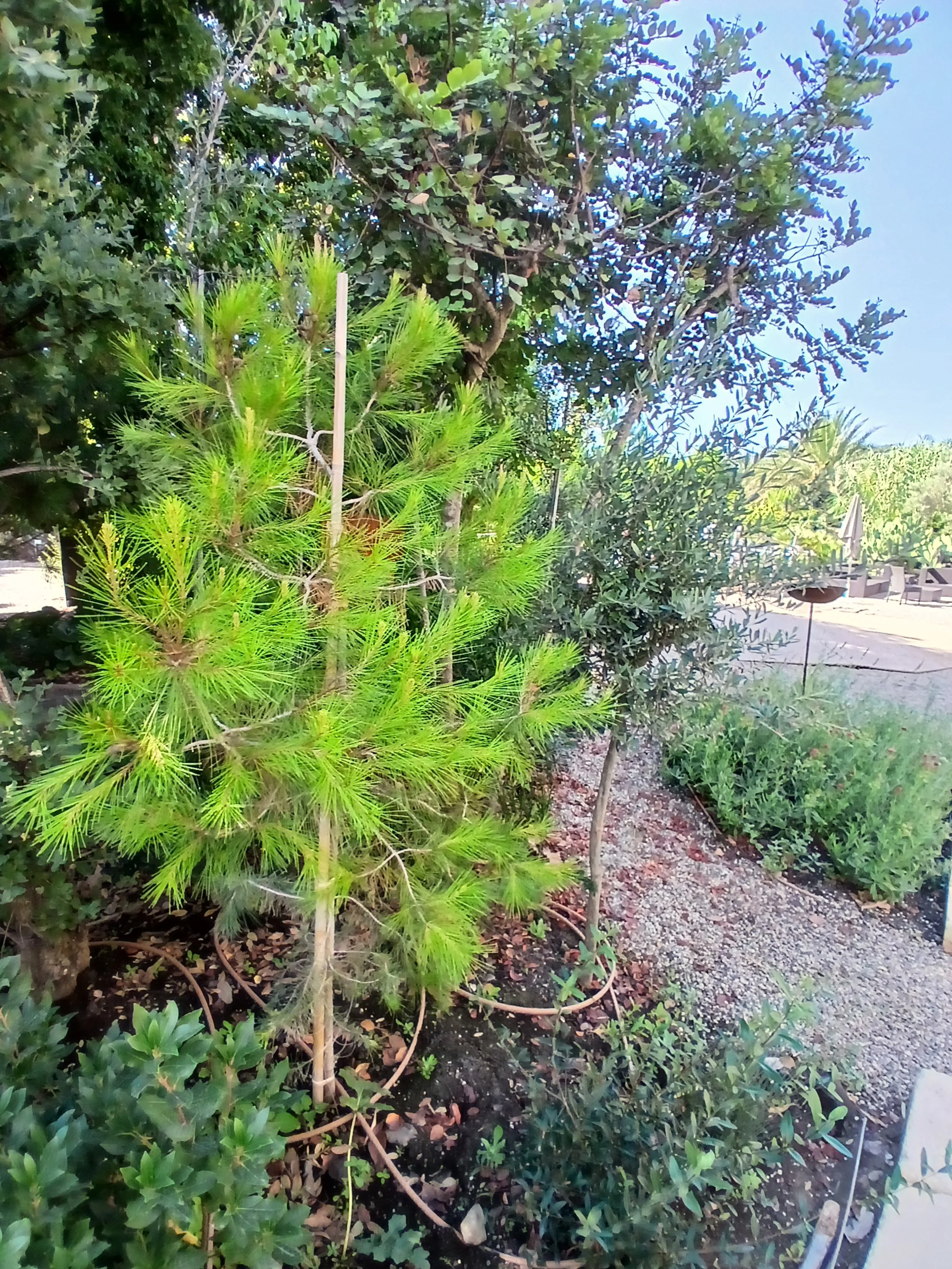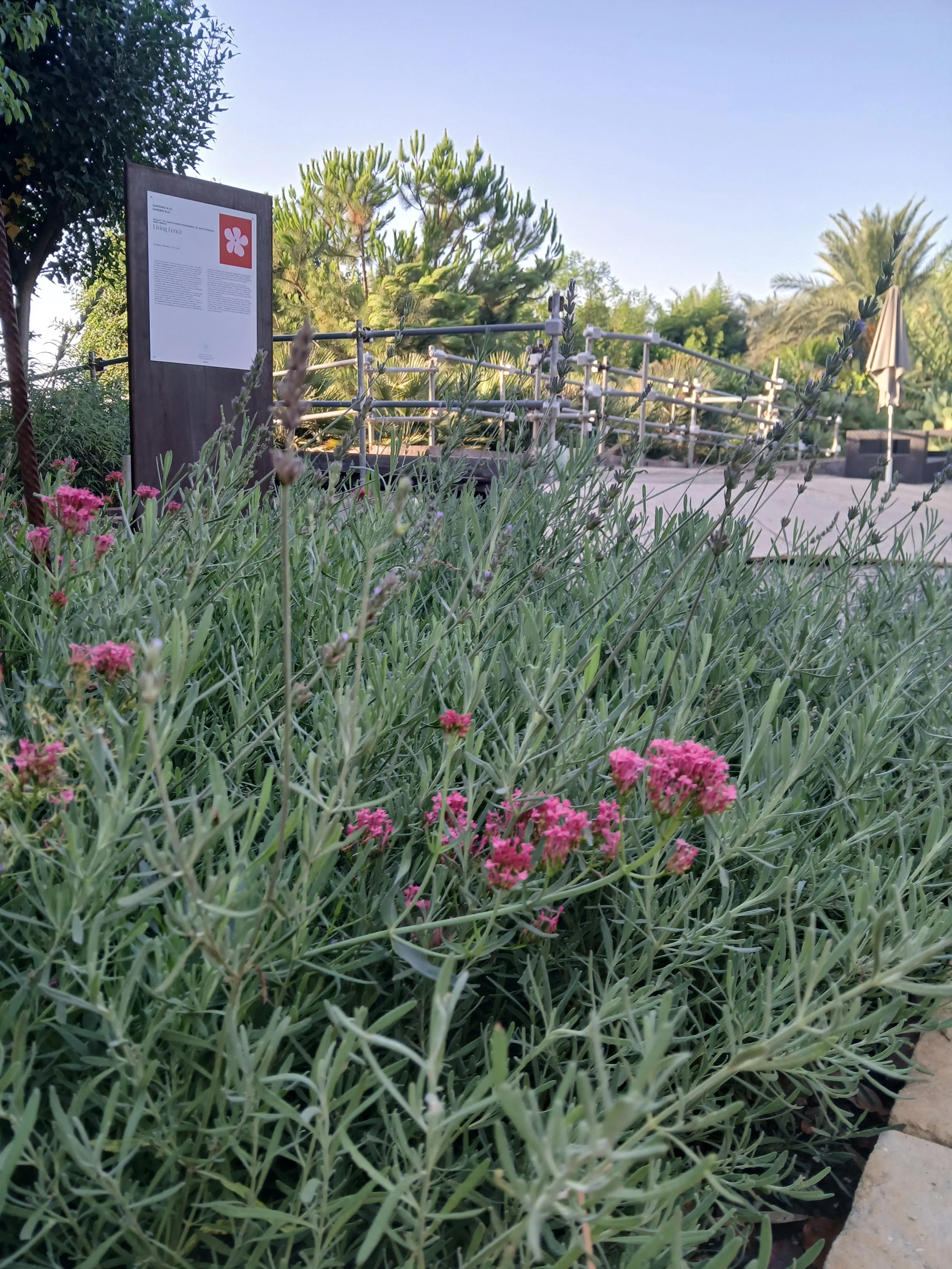
Garden created for the Radicepura Festival
Date: May 2025
Role: Site supervision
FOREST GARDEN
In this project, designers Asmita and Parth wanted to explore an alternative to traditional fences or walls by imagining a woodland edge inspired by the method of Japanese botanist Akira Miyawaki. A powerful idea: using the force of nature to define boundaries — not with rigid constructions, but with a living, dynamic, evolving ecosystem.
In the absence of the designers, the festival director entrusted me with full supervision of the garden. I followed each phase: from managing the site to supporting planting decisions, from species review to the final adjustment of quantities.
Before starting, I took time to study Miyawaki’s ecological approach more deeply. You can read more about my thoughts and findings on his method here: (Learn more).
The main difference between the original method and our built version lay in plant size: Miyawaki typically starts with very young seedlings, while we were working with already-developed trees, often with expansive crowns and significant root balls. The only viable approach was to let the plants guide us. As each arrived on site, I chose its place, seeking to preserve overall balance and remain true to the project’s soul: variety, vertical layering, and harmony of spacing (roughly 60–80 cm). I orchestrated forms and volumes, imagining the garden not only as it looked in the present, but as it might evolve in the years to come.
Among the garden’s key presences: a three-meter cork oak with an elegantly tilted trunk — a true vegetal sculpture; a Celtis australis, and a multi-trunk carob tree, splitting low at the base. Around them: bay laurel (Laurus nobilis), mock privet (Phillyrea angustifolia), mastic tree (Pistacia lentiscus), tamarisk (Tamarix gallica), young olive trees (Olea europaea), Aleppo pine (Pinus halepensis), and stone pine (Pinus pinea). A quiet but meaningful surprise was the dwarf fan palm (Chamaerops humilis), the only palm species native to Sicily — discreet, but deeply symbolic.
Along the garden’s outer edge, we planted lavender (Lavandula angustifolia), cotton lavender (Santolina chamaecyparissus), and red valerian (Centranthus ruber) — a species I often encountered along cliffs and old walls of Mount Etna, but which had to be sourced from Tuscany, since it’s surprisingly absent in Sicilian nurseries. And then there was Acanthus mollis — lush at first, but later stressed — possibly due to powdery mildew, or maybe just too much watering.
The final touches were a homage to the landscape: corten steel birdhouses, designed to oxidize naturally over time; a large reclaimed stone, found in an old warehouse; and tufo stones to define the forest's soft perimeter.
This garden is more than a green boundary. It’s a place that tells stories, welcomes change, and transforms — like a small forest growing before our eyes, teaching the value of time, care, and coexistence.







